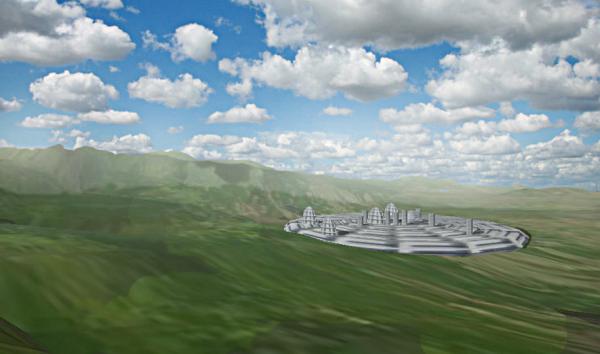BY LETTER
Henon
Galactography > Regions of Space > Outer Volumes
Sophonts > Modosophonts > Sapient Structures
Galactography > Systems and Worlds > Systems & Worlds G - H
Sophonts > Modosophonts > Sapient Structures
Galactography > Systems and Worlds > Systems & Worlds G - H
Outer Volumes planet with independently sentient cities | |
 Image from Steve Bowers | |
| The remote Thought-city of Hausdorff is one of the few that admits no visitors | |
These exotic heteromorphs were determined to establish a series of colonies in the region around HIP 10541, where they could live according to a new emergent philosophy based loosely on Solarism but with strong influence from Keterism.
The first planet, Henon, was quickly terraformed using advanced technology and turned into a multiclade technoparadise. However the Perseus Arm was thrown into chaos by the appearance of the Amalgamation threat, which diverted resources away from the Henon volume and delayed the arrival of wormhole connections.
Over the next five hundred years isolated Independent civilisation on Henon consolidated its defenses and increased the number of ascensions and transcensions within its population, in an effort to resist the Amalgamation transformation virus if it should re-emerge. In 9149 the Henonian culture started the construction of a well-defended Matrioshka Brain around HIP 10541, and almost every clade and entity belonging to that culture migrated to the new substrate. Only a very few sophonts remained on the old world, all belonging to a single clade.
The Thought-cities
When the news of the depopulation of Henon appeared on the Known Net, a new colonisation initiative, the Czenik Fleet, sent several ships there. The new colonists, mostly nearbaseline human and provolved lemurs, found that the planet still held several empty hi-tech cities in apparently good repair. These cities themselves were sophont entities in their own right, the last remaining clade from the previous wave of colonisation. The so-called Thought-cities of Henon proved to be hospitable and efficient places to inhabit, and most of the new colonists took up residence in these self-sufficient constructs.A typical Thought-city is circular or semicircular in form, depending on the local terrain; semicircular forms tend to border seas, lakes or regions of abrupt elevation change. Cities range from 2km to 20km in radius; once established they generally do not move location (unlike certain other sentient city-clades) except in extreme circumstances. They include thousands of vertical farm-organisms, elongated ellipsoidal structures which catch the local sunlight and grow food and biotech products of various kinds. Living accommodation is grown using synanotech and can be tailormade for the user's requirements.
Rapid personal transport systems are integrated into the form of the thought-city, which respond to commands given verbally or by neural interface and can carry a citizen to any destination in the city within a few minutes. Consumables, waste, power and information flows are all regulated by the cities' autonomic systems.
New thought-cities appear from time to time, sometimes constructed by maker-bots from a single city, or constructed as a cooperative effort by two or more cities. The cities maintain a lively culture of their own, and for the most part are happy to accommodate their new citizens. Sometimes the thought-cities have disputes of various sorts, occasionally escalating into physical conflict. The cities are quite capable of manufacturing weapons, and there have been instances of limited warfare involving physical damage to one or both parties.
However the worldwide community of thought-cities (which numbers fewer than three thousand individuals in total) tend to condemn such acts of violence, with the worst offenders becoming ostracised, or even demolished by concerted action.
A more common form of conflict occurs when a city persuades or bribes its citizens into acting on its behalf, sometimes by invading other cities, or simply by settling scores through (relatively) good-natured rivalry at sports, tournaments, war games and other competitions.
Some thought-cities are less hospitable than others, and refuse to allow any citizens to live within their borders; they close all access points and refuse to supply food or other services. These cities are shunned by the community of cities on Henon. A few of these cities, and some of their more hospitable kin, have laboriously transferred their constituent parts into orbit where they live as independent megastructures.
A very few of these orbital cities have acquired stardrives of various kinds and have set off to explore nearby systems; these cities resemble small civilisation ships in flight, although when a city-ship reaches a suitable planet it may seed new cities there, or sometimes even transfer out of orbit and become settled once more.
Related Articles
Appears in Topics
Development Notes
Text by Steve Bowers
Initially published on 15 August 2011.
Initially published on 15 August 2011.






